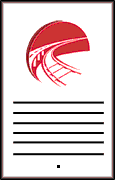Mid-America Transportation Center

Mid-America Transportation Center: Final Reports and Technical Briefs
Date of this Version
2013
Document Type
Article
Citation
Report # MATC-MU: 179 Final Report 25-1121-0003-179
Abstract
Research shows that a high percentage of crashes that take place on high-speed rural expressways occur at intersections with minor roads. One low-cost alternative design for improving the safety of at-grade intersections on such expressways is the J-turn. In the last few years, the Missouri Department of Transportation has converted some two-way stop controlled (TWSC) intersections into J-turns. This study evaluated the effectiveness of the J-turn intersection design in Missouri utilizing field studies, a public survey, crash analysis, and traffic conflict analysis. The field studies collected detailed video data at a J-turn site and a control site. The crash analysis included a statistically rigorous empirical Bayes before-after safety evaluation of five J-turn sites in Missouri. The J-turn design resulted in a 34.8% reduction in crash frequency for all crashes and a 53.7% reduction in crash frequency for all injury and fatal crashes. Both reductions were significant at the 95% confidence level. Annual disabling injury crashes and minor injury crashes decreased by 86% and 50%, respectively. None of the five sites exhibited a fatal crash following J-turn implementation. This five-site analysis showed that annual right angle crashes decreased from 6.3 to 1.3, a 80% reduction. One of the most severe crash types, the left turn, right angle crash, was completely eliminated by the J-turn. One conflict measure, average time to collision, was found to be four times higher at the J-turn site compared to the control TWSC site among minor road turning vehicles, indicating greater safety at the J-turn site. The average wait time at the J-turn site was half the wait time at the control site, while the average travel time at the J-turn site was approximately one minute greater than at the TWSC site. When the public was surveyed regarding trip time perceptions resulting from the J-turn, the majority said there was no adverse effect. A high percentage of minor road left turning and through movements at the J-turn site merged into the travel lanes within the first 400 feet of the acceleration lane. Public opinion regarding the J-turn at US 63 and Deer Park Rd was mixed. Frequent concerns raised by respondents included difficulty merging following the U-turn, improper use of acceleration and deceleration lanes, insufficient U-turn radius to accommodate large vehicles, and driver confusion.


Comments
2012 Copyright of Mid-America Transportation Center